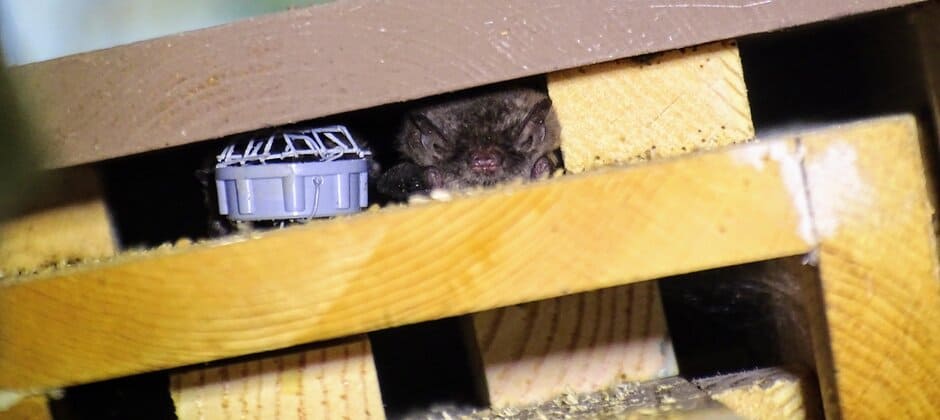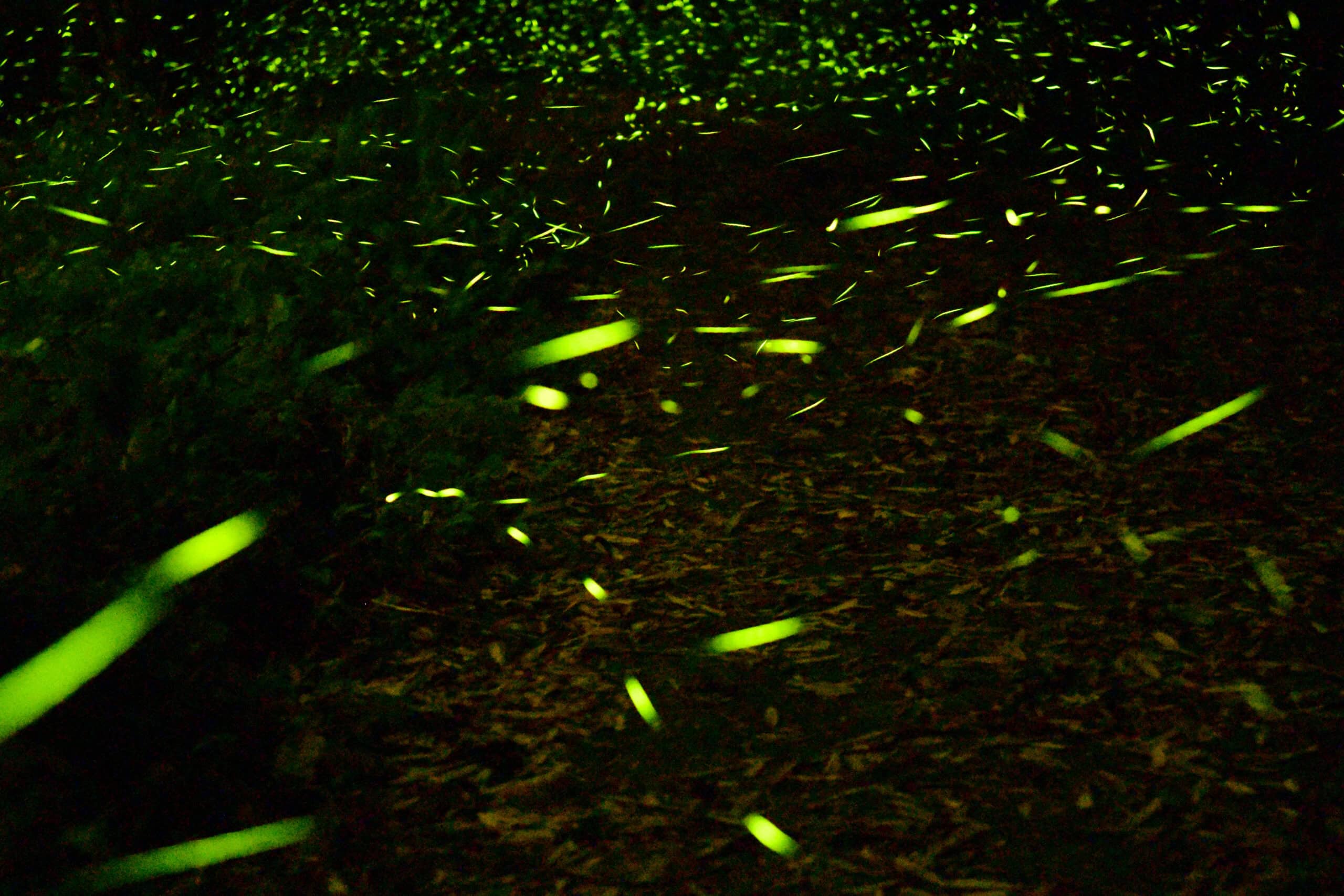Share this article
Can boxes help fight white-nose syndrome?
Conservationists coping with the spread of the deadly white-nose syndrome are finding innovative solutions by thinking inside the box.
Wooden bat boxes work as artificial roosts for bats in areas with fewer trees around for them to roost in.
“Bat boxes are used as mitigation tools to create roosts where natural habitat is lacking, or where we feel like they provide beneficial roosting structures for bats,” said assistant professor and extension wildlife specialist at the University of Illinois Joy O’Keefe. They can also be used to draw bats into areas for insect control. “Over the years, bat boxes gradually became common tools for conservation and management.”
In the Midwest, bats use boxes from April through early October after hibernating over the winter in caves and mines. While roosting, bats sometimes lower their body temperature to match cold environments—a process called heterothermy. Sometimes, they maintain constant temperatures despite cold or warm environments, a process called endothermy. Both mechanisms require energy, but it’s possible that warmer bat boxes could help endothermic bats save energy.
Bat boxes were installed near Indianapolis in 1992, and while some bat species used them, it wasn’t until 2003 that a group of Indiana bats were discovered using a box from the 1990s. But while there were more than 3,000 boxes put out originally, bats tended to use only five regularly. “This made us ask the question of: Why are these good and the others aren’t?” she said.
To answer the question, O’Keefe and her colleagues studied how these Indiana bats (Myotis sodalis) in Indianapolis and Kentucky used a few different types of bat box designs. They published their research in Conservation Physiology.
The team tested a typical box called a rocket box that has two chambers bats can access, with a meter of space each from top to bottom. Some 200-300 bats can pack themselves into these boxes. But with knowledge that bats need certain temperatures to balance their energy budgets, they also tested rocket box designs with modifications. For one modification, they took out the vents, in one they added a chimney, one had a white tile roof to cool down the box by reflecting solar radiation, and one included a water jacket. The water jacket box incorporates vacuum-sealed water packets that insulate the box to keep it warmer during cold weather—at least until the water freezes.
The researchers also placed the boxes in different positions on the landscape, some facing east and some west, some under the tree canopy, and some in the open, to see if that would change how bats used them. Except for the open boxes, they kept the boxes close to the tree line so that bats had access to nearby trees to forage.
From April to September, the research team went out several times a week and shined a spotlight into the boxes to count bats. They also placed temperature loggers in each box to see how they responded to outside air conditions. The team added data on abundance, placement of boxes, design, and weather information into models to determine bat energetic costs.

The research team pictured from right to left, Joy O’Keefe, Francis Tillman, Reed Crawford, Luke Dodd and Evan Moser. They studied how different bat box designs impacted energetic balance of federally endangered Indiana bats. Credit: Reed Crawford
When it came to where boxes were placed, they found endothermic bats expended less energy in the sun. But in the shade, no matter the bat box design, heterothermic bats could reduce their temperature better and save energy. Box design wasn’t important for heterothermic bats because all box types had temperatures somewhere in the box where they could reduce their temperature to save energy, they found.
O’Keefe and her colleagues also found that the water jacket model was best at regulating temperatures for endothermic bats. Bats could stay warmer longer into the night and would be less likely to overheat during the day in the water jacket design. That’s a good thing for female bats that need energy to forage, and for their pups that need a warm roost. “The water jacket design more closely mimics what a tree would do in terms of heating up and retaining heat,” she said.
The chimney box was the coolest and the vent removal box was the warmest.
O’Keefe said the findings show the importance of deliberately putting boxes on the landscape, knowing in advance how those boxes may perform in different weather conditions.
That’s especially important because the bats that use the boxes include the federally protected northern long-eared bat (Myotis septentrionalis) and Indiana bat, and the little brown bat (Myotis lucifugus), which is being considered for federal listing. These species are also at risk for contracting the fungal disease white-nose syndrome.
When bats emerge from hibernation in the spring, if they had to contend with white-nose syndrome while hibernating, they may not be fit enough to carry a pup, she said. “For bats trying to recover from white-nose syndrome and females deciding whether to forego pregnancy, warmer roosts are beneficial,” she said. “And, overall, bat species affected by white-nose syndrome are also likely to use bat boxes.”
If we want to protect these bats, she said, “we should adequately understand what boxes we’re giving them.”
Header Image: A bat peeks out of a bat box. Credit: Joy O’Keefe, University of Illinois








